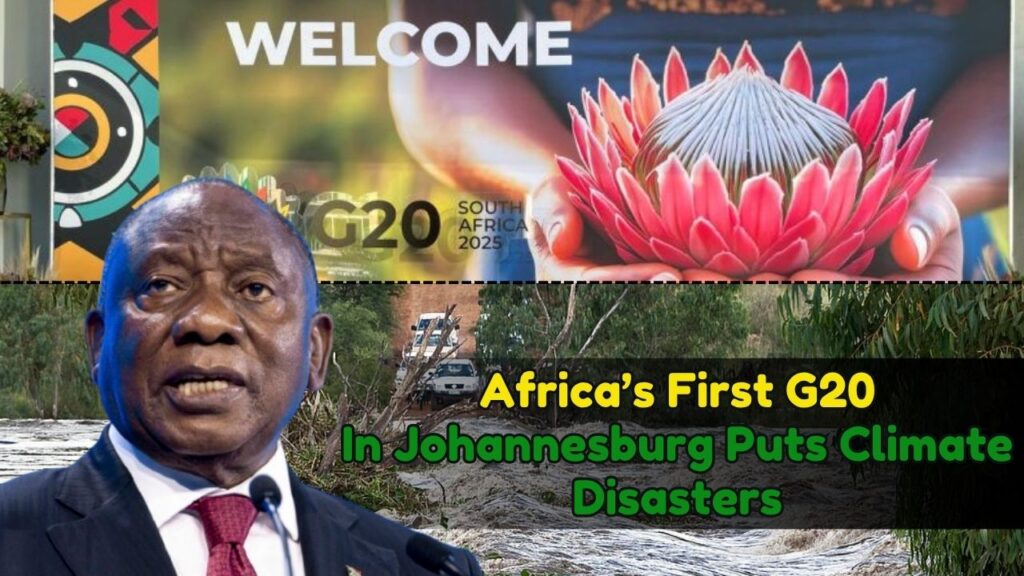Ukraine has taken a bold new step on the global stage by announcing that it will seek 43 billion dollars in climate compensation from Russia at the UN Climate Change Conference in Brazil, commonly known as COP30. The demand connects the human and economic costs of war with its environmental and climate impacts, arguing that fossil fuel burning, forest destruction, and rebuilding activities linked to the invasion should be counted as “conflict carbon” and financially compensated.
By framing the war as both a humanitarian and a climate crisis, Ukraine aims to become the first country to use international legal mechanisms to hold another state accountable for greenhouse gas emissions generated by armed conflict. This move could redefine how wars are viewed in climate negotiations and shape future rules for accountability and reparations.
War, Climate, And The Idea Of “Conflict Carbon”

At COP30, Ukraine’s Deputy Minister for Economy, Environment and Agriculture, Pavlo Kartashov, described the invasion as a “dirty war” in more ways than one. The destruction is not only visible in ruined cities and displaced people but also in the invisible layer of greenhouse gases it leaves in the atmosphere.
Vast quantities of fuel burned by military vehicles, rockets, aircraft, and logistics chains release large volumes of carbon dioxide and other harmful gases. Forests and fields set on fire by shelling and missiles destroy natural carbon sinks. Buildings flattened by explosives must be reconstructed using emissions intensive materials such as concrete and steel. All of these factors together are what Ukrainian officials call “conflict carbon”.
According to Kartashov, the climate is itself a casualty of war. While Ukrainians feel the violence directly, the climate impacts of this conflict will be shared by the entire world, because greenhouse gases mix globally and remain in the atmosphere for decades.
Short Summary Table
Aspect |
Details |
|---|---|
Main Issue |
Ukraine demanding 43 billion dollars in climate compensation from Russia |
Event |
Announcement at COP30 UN Climate Change Conference in Brazil |
Concept |
“Conflict carbon” emissions from war activities such as fuel burning, destruction, and reconstruction |
Estimated War Emissions |
Around 236.8 million tons of CO2 equivalent, according to a government funded study |
Global Comparison |
Emissions comparable to one year of emissions from Austria, Hungary, Czech Republic, and Slovakia combined |
Purpose Of Claim |
Finance a green recovery, rebuild infrastructure, and support climate friendly development |
Legal Basis |
International law mechanisms for war related damages and climate accountability |
Policy Direction |
Ukraine drafting a green recovery law and aligning with European Union climate policies |
Official Site Link |
How The 43 Billion Dollar Climate Claim Was Calculated
The 43 billion dollar climate compensation demand is grounded in a detailed study produced by the Initiative on Greenhouse Gas Accounting of War, or IGGAW. This government funded initiative was created to systematically measure the climate footprint of the Russian invasion.
The October report estimates that the invasion has generated emissions equivalent to 236.8 million tons of carbon dioxide. This figure covers a wide range of war related sources, including:
- Direct emissions from fuel used in military operations
- Emissions from fires in forests, grasslands, and urban areas
- Emissions linked to the production of materials needed to rebuild destroyed infrastructure
To help people grasp the scale, the report compares the war related emissions to the annual emissions of several European countries. It concludes that the invasion has produced as many climate warming gases as Austria, Hungary, the Czech Republic, and Slovakia emit together in a typical year.
Based on these calculations, Ukraine has translated the climate damage into a financial claim of 43 billion dollars. The figure is intended to reflect the cost of both the climate impact itself and the investments needed to rebuild in a low carbon and resilient way.
Setting A Precedent In International Law
The lead author of the IGGAW report, Lennard de Klerk, has said that the documentation of war emissions is designed to serve as the technical foundation for Ukraine’s formal compensation demand. He argues that international law already provides mechanisms for claiming damages caused by unlawful acts, including armed aggression, and that these mechanisms can and should be used to include climate damage.
If accepted, Ukraine’s claim would be the first time a country has sought compensation specifically for climate emissions generated by war. It would introduce a new dimension to international responsibility by:
- Treating war related emissions as a compensable harm
- Encouraging more accurate tracking of military climate impacts
- Potentially deterring future conflicts by increasing their long term costs
This development could also influence the ongoing debate about who should pay for loss and damage in climate negotiations, especially when climate harm is directly linked to military action.
A Green Recovery Vision For Postwar Ukraine
Ukraine is not only seeking compensation. It is also trying to shape what its postwar future will look like. The government has drafted a law aimed at guiding a “green recovery” that would attract international investment and steer reconstruction toward low carbon and climate resilient infrastructure.
Key goals of this green recovery vision include:
- Rebuilding cities and transport networks with energy efficient designs
- Expanding renewable energy capacity to reduce dependence on fossil fuels
- Restoring damaged ecosystems, forests, and agricultural land
- Creating green jobs and sustainable industries as part of the rebuilding process
Ukraine has also pledged to align its climate and energy policies with those of the European Union. This means adopting stricter climate targets, modernising its energy sector, and integrating into the broader European green transition. By linking war compensation to green investment, Ukraine hopes to turn destruction into a catalyst for modernisation and sustainability.
Why Ukraine’s Claim Matters For Global Climate Talks
The Ukrainian climate claim at COP30 goes far beyond a bilateral dispute with Russia. It raises broader questions for the international community:
- Should greenhouse gas emissions from war be tracked and reported in national climate inventories
- Who is responsible for emissions that are the result of illegal aggression or occupation
- Can climate negotiations address the environmental consequences of conflict without getting trapped in geopolitical arguments
For vulnerable countries, the idea of “conflict carbon” adds another layer to their demands for climate justice. Many regions already face climate impacts they did little to cause. If those impacts are worsened by wars they did not start, it seems logical to them that the polluters and aggressors should pay more.
Ukraine’s move may therefore be watched closely by other nations experiencing or recovering from conflict. Over time, it could encourage new rules, standards, and financial mechanisms to address the climate cost of war.
Frequently Asked Questions (FAQs)
1. What is Ukraine asking from Russia at COP30
Ukraine is seeking 43 billion dollars in climate compensation from Russia. This sum is meant to cover the climate damage caused by war related emissions and to support a green, sustainable reconstruction of the country after the conflict.
2. What does “conflict carbon” mean
“Conflict carbon” refers to greenhouse gas emissions generated directly or indirectly by war. This includes fuel burned by military vehicles and aircraft, fires caused by shelling, emissions from destroyed infrastructure, and the carbon footprint of reconstruction using materials like concrete and steel.
3. How were the war related emissions estimated
A government funded initiative called the Initiative on Greenhouse Gas Accounting of War calculated that the Russian invasion has produced around 236.8 million tons of CO2 equivalent. The researchers combined data on military activities, fires, infrastructure damage, and reconstruction needs to arrive at this figure.
4. Is there a legal basis for climate compensation from war
Ukraine argues that international law already allows states to seek reparations for damages caused by unlawful aggression. By documenting war emissions in detail, Ukraine plans to use these legal frameworks to claim compensation for climate damage as part of the broader war related losses.
5. How does this relate to Ukraine’s future development plans
Ukraine wants to use any climate compensation as part of a wider green recovery strategy. The country is drafting laws to guide sustainable rebuilding, expand renewable energy, restore ecosystems, and align with European Union climate policies so that its postwar economy is more modern, resilient, and low carbon than before the invasion.
For More Information Click HERE











